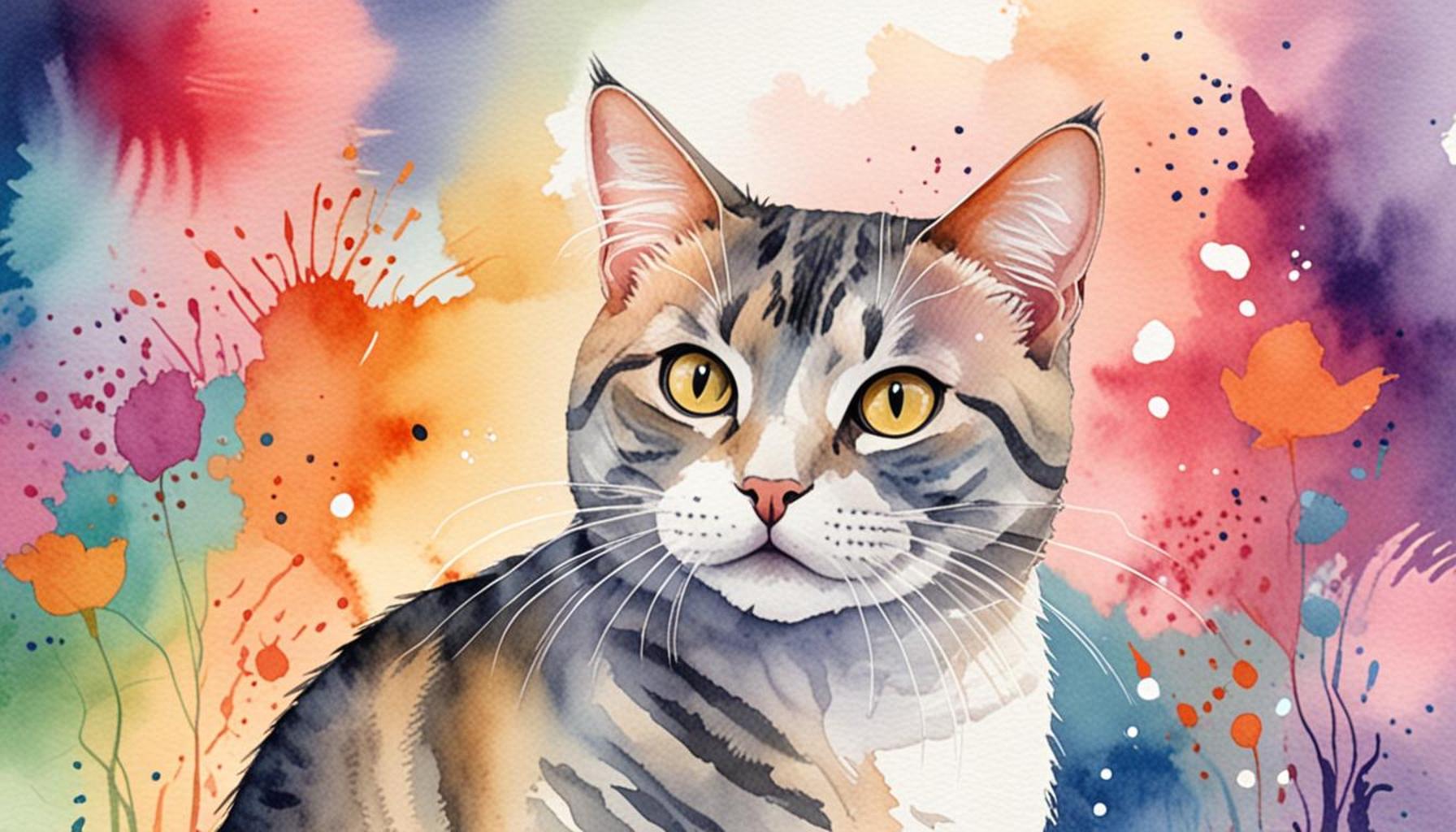Understanding Cat Vocalizations: What Your Feline is Trying to Tell You

Understanding the Nuances of Cat Vocalizations
Have you ever wondered what your feline companion is trying to communicate? Understanding cat vocalizations offers fascinating insights into their emotions, desires, and even health. By paying close attention to these sounds, you can unlock a deeper bond with your pet, as well as enhance their overall well-being.
Cats employ a variety of sounds to express their needs, ranging from playful excitement to distress. Here’s a closer look at some common vocalizations:
- Meows: Perhaps the most recognizable sound, meows are a general request for attention or food. Interestingly, adult cats typically reserve meowing for interaction with humans, as they may not communicate as much with other cats in this manner.
- Purrs: Often associated with contentment, a cat may purr when they’re being petted or while lounging comfortably. However, it’s important to note that purring can also indicate pain or distress, so context is key.
- Hisses and growls: These vocalizations act as warning signals. A hissing cat is usually feeling threatened or defensive, while growling can express aggression or fear. Such sounds often occur in situations involving unfamiliar animals or sudden changes in their environment.
- Chirps or chattering: Often heard when cats observe birds or other wildlife, this sound reflects a mix of excitement, frustration, or even instinctual hunting behavior. It can sometimes be seen when they’re perched near a window, eagerly watching the outside world.
The meaning behind each sound can vary greatly depending on the context. For instance, a cat might meow differently depending on the time of day or the presence of certain individuals in the household. Observing your feline friend closely reveals the diverse range of emotions they experience.
Additionally, various factors can influence a cat’s vocalizations:
- Age: Kittens may produce higher-pitched sounds compared to adult cats, who might develop a wider range of vocalizations as they age.
- Health: A sudden change in vocalization—whether an increase in loudness or unusual sounds—may signify health issues that require veterinary attention.
- Environment: Stressful situations, such as moving to a new home or the introduction of new pets, can lead to heightened vocal behavior, indicating the animal’s anxiety.
Delving into the world of cat vocalizations not only strengthens the bond between you and your pet but also enhances your understanding of their overall well-being. Each sound your cat makes tells a story, and your awareness of this language can make a significant difference in their life. As you embark on this exploratory journey, prepare to uncover the hidden nuances in your furry companion’s voice, making your shared experiences all the more enriching.

DIVE DEEPER: Click here to uncover impactful success stories
Decoding the Sounds: Types of Cat Vocalizations
To truly understand your cat, one must first delve into the various types of vocalizations they produce. Each sound conveys a specific meaning and can indicate differing emotional states, desires, or responses to their environment. By familiarizing yourself with these vocalizations, you can become more attuned to your feline friend’s needs.
- Distinct Meows: While a cat’s meow is often a call for attention, these vocalizations can vary significantly. For example, an urgent, high-pitched meow may signal hunger, while a gentle, lower-pitched meow could be a greeting. Some cats even develop a unique “language” with their owners, catering their meows to elicit specific responses.
- Purring Patterns: Although purring is commonly associated with contentment, it can have several meanings. Cats might purr when they’re happy, but they can also purr when they are in pain or feeling unwell. It is crucial to observe other body language cues, like tail position and posture, to gauge the true context of the purring.
- Hissing and Growling: These vocalizations are often cries of discomfort or warning. A hissing cat is clearly signaling that they feel threatened, while growling can reflect fear or aggression. Owners should take such sounds seriously and assess the situation to protect both the cat and any other animals or people nearby.
- Chirps and Chattering: This intriguing sound is often heard when a cat zeros in on birds or small animals from a secure perch. This vocalization represents a mix of excitement, anticipation, and a predatory instinct, showcasing your cat’s natural hunting behavior.
The complexity of feline sounds goes beyond mere labels; understanding the context is fundamental. Factors such as the environment, the presence of other animals, and the individual cat’s personality all influence how and when these sounds appear. For instance, a quiet cat may suddenly become vocally expressive during playtime, revealing their more energetic side.
Another aspect to consider is a cat’s emotional state. Stressful changes like moving to a new home or introducing a new pet can lead a cat to vocalize more than usual. Recognizing the triggers associated with increased vocalization can help you mitigate stressors and promote a peaceful atmosphere for your feline.
By paying attention to your cat’s vocalizations, you can transform your interactions and respond more effectively to their needs. Understanding these sounds not only helps you bond with your cat, but it also cultivates a happier, healthier living environment for both of you.
Understanding Cat Vocalizations: What Your Feline is Trying to Tell You
Cats are known for their unique vocalizations, which can vary greatly in tone and intensity. Understanding these sounds is crucial for interpreting your furry friend’s needs and emotions. Whether it’s a soft purr, an aggressive hiss, or a gentle meow, each vocalization serves a purpose in feline communication.
Many people underestimate the importance of a cat’s vocal sounds, thinking they are merely background noise. In reality, these vocalizations convey a plethora of emotions and intentions. For instance, kittens meow to communicate with their mothers, but as they grow, they tend to reserve this vocalization solely for human interaction. This shift indicates that when your adult cat meows at you, it is a form of communication intended specifically for you.
Additionally, the tone and pitch of a cat’s meow can express different emotions. A high-pitched meow may indicate excitement or a request for attention, while a deep meow might signal annoyance or irritation. Understanding these nuances can enhance the bond between you and your feline companion, allowing for a deeper understanding of their behavior.
Moreover, factors such as age, breed, and personality influence how vocal your cat is. For example, Siamese cats are renowned for their talkative nature, often engaging in loud conversations with their human companions. On the other hand, more reserved breeds like the British Shorthair might communicate less vocally, relying more on body language.
In order to help pet owners decipher what their cats are trying to communicate, it’s essential to pay attention to the context of the vocalizations. Is your cat vocal while being fed? This could indicate anticipation or hunger. Is your cat meowing while perched on the windowsill? It might be expressing interest in the outside world, or it could be seeking your attention for playtime. Recognizing these context clues can lead to a more fulfilling relationship with your cat.
| Vocalization Type | Interpretation |
|---|---|
| Meowing | A call for attention or a specific need |
| Purring | Indicates contentment or self-soothing |
| Hissing | A sign of fear or aggressive warning |
| Chirping | Signals excitement or interest, often when prey is spotted |
Through careful observation and active communication with your feline friend, you can better understand their needs and emotions. This will not only enrich your relationship but also create a more harmonious living environment. Your cat’s voice is their way of reaching out—by learning to listen, you are better equipped to respond to their needs.
DISCOVER MORE: Click here for exciting training methods
Understanding the Vocalization Spectrum: Beyond the Basics
As we continue to explore the nuances of cat vocalizations, it’s essential to consider not just the sounds themselves, but also the situations in which they are uttered. Each vocalization is a piece of a larger puzzle that represents your cat’s way of communicating its needs, feelings, and desires.
Yowling is a particular sound that many cat owners may encounter, especially if they have intact males or females. This loud and somewhat haunting call is often associated with mating behavior, but it can also signal distress or discomfort. For instance, an older cat may yowl due to a medical condition or cognitive dysfunction. Recognizing this vocalization can prompt a visit to the veterinarian if it becomes a frequent occurrence.
Another interesting vocalization is the trill or a chirrup, a sound that strikes a balance between a meow and a purr. This pleasant, melodic call is often used by mothers to call their kittens or, in an adult cat’s context, to greet their owners. If your cat greets you with a trill after you’ve been away, it exhibits a blend of affection and excitement, showcasing their strong social bonds with you.
Additionally, the environmental context in which vocalizations occur is crucial for understanding their significance. For example, a cat may exhibit increased vocalization during nighttime, a phenomenon colloquially known as the cat crazies. This behavior is not unusual, as cats are crepuscular creatures, meaning they are most active during the twilight hours of dawn and dusk. Owners who notice this may want to provide engaging activities or toys to prevent disruptive nighttime vocalizations.
It’s also worth noting that cats can do something quite unique: they can modify their vocalizations in response to our behaviors and preferences. A study published in the Journal of Animal Behavior revealed that cats can adapt their meows to match the pitch and tone that their human companions typically respond to. By understanding their owner’s responses, they can effectively communicate their needs, making it crucial for pet owners to recognize any changes in these patterns.
Utilizing Body Language Alongside Vocalizations
To gain a more comprehensive understanding of what your cat is trying to tell you, it is vital to observe their body language in conjunction with their vocalizations. For instance, if a cat is letting out soft meows while its body is relaxed and its tail is held high, it’s likely reaching out for social interaction. Contrarily, if your cat emits low growls or hisses while arching its back and puffing up, it’s clearly expressing fear or discomfort.
Moreover, different breeds may exhibit vocalizations distinct from the average domestic cat. For example, the Siamese breed is known for its striking and often loud vocalizations, which can be interpreted as a strong need for attention or interaction. Knowing your specific breed’s tendencies can enhance your ability to interpret their sounds and improve communication.
As you further immerse yourself in understanding cat vocalizations, consider keeping a journal to track the various sounds your cat makes in different situations. This practice could provide valuable insights into your feline’s unique vocal repertoire and behavioral patterns, ultimately enhancing your bond and enriching your shared experiences.
DIVE DEEPER: Click here to discover the emotional benefits of pet adoption
Conclusion: Deciphering the Language of Your Cat
In the intricate world of cat vocalizations, understanding what your feline companion is trying to communicate requires both attentiveness and empathy. From the plaintive yowls that can signal distress to the joyful trills that express affection, each sound serves as a vital clue to your cat’s emotional state and needs. By recognizing these vocalizations and considering the contexts in which they occur, you can forge a deeper emotional connection with your pet.
The art of deciphering cat communications also extends beyond merely listening; it is essential to integrate an awareness of your cat’s body language. This holistic approach will allow you to gauge your feline’s comfort level, social desires, and even health concerns. For instance, correlating a soft meow with a relaxed posture versus a growl paired with an arched back can help you navigate situations that may need your attention.
Moreover, different breeds may continue to surprise you with their unique vocal habits, underscoring the importance of understanding your specific cat’s characteristics. Keeping a journal of their vocalizations and corresponding behaviors could illuminate their unique voice and enhance your interactions.
Ultimately, being attuned to your cat’s vocal expressions offers insights into their thoughts and emotions, providing a rewarding journey of companionship. As you become more adept at interpreting these sounds, you’ll not only improve your understanding but also enrich the quality of your relationship with your furry friend. Be patient, observant, and compassionate; the reward is a rewarding bond that transcends words.



